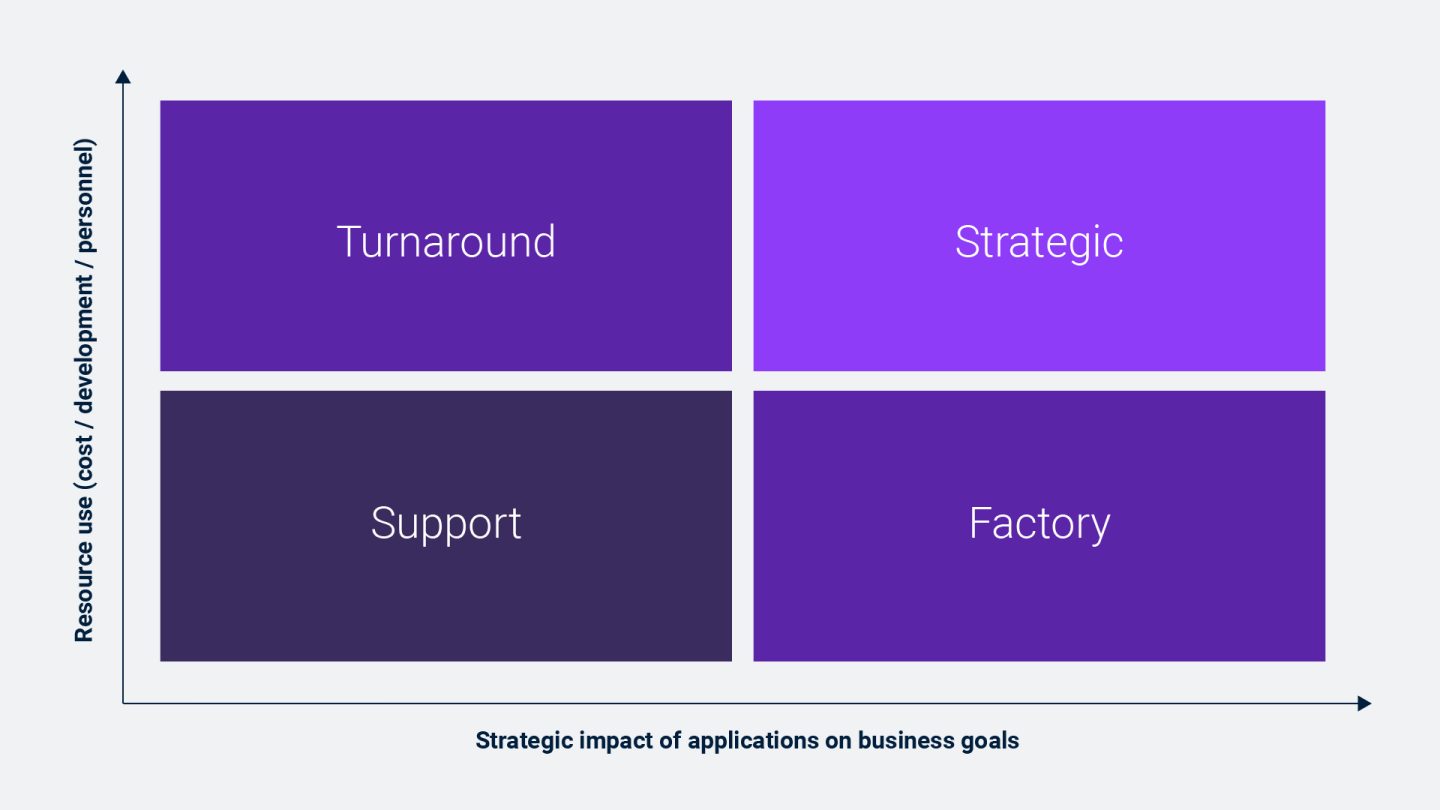You’ve Come a Long Way, Baby: A Retrospective of APM
Application Portfolio Management has evolved over the last 20+ years. Gain a thorough understanding of its key use cases today including application lifecycle management, portfolio governance, and more.

The advent of software applications can be traced to the very first memory-held software program, the Manchester Baby created at the University of Manchester in 1948. The following years saw the development of various programming languages that spurred the age of software applications — the lifeblood of today’s digital world. As the use of computer software became widespread in the early ’80s to the late ’90s, software application complexity and scope grew at an exponential rate. Computers and applications gradually became cheaper, and more and more companies started investing in systems and applications to run processes, raise productivity, exchange data, and transact with customers, partners, and suppliers. This ubiquitous use of software applications is the core of business organizations today.
Accessibility and widespread use of intra- and internet communication systems has driven application integration relentlessly — thus the wild web of applications that companies are faced with taming today. Since the early ’90s, organizations have been straining to take hold of the torrent of applications in their IT portfolio — endeavoring to understand their usage, cost to maintain, and business value. Especially in the wake of — or in anticipation of — distruptive events, comprehensive insights into the application portfolio becomes essential. The Y2K event was exemplary here with organizations performing a thorough inspection of all applications and frantically ramping up remediation and reconciliatory efforts in preparation for the unthinkable.
With the new millennium, Application Portfolio Management (APM) began to take its first baby steps, becoming a domain of much interest in the IT industry as well as in large business and government organizations, where the need to properly maintain, document, and manage the application portfolio was at the forefront. Between 1998 to 2000, IBM was able to reduce the number of its application systems from 15,000 to 6,800. This led to an overall decrease in the cost of managing a big application portfolio as well as reduced complexity of the application portfolio dependencies. Similar findings in other sectors validated the need for businesses to obtain up-to-date information on their application portfolio.
In an early study done by Ward [1998]1, various assessment and rationalization methodologies were compared to understand ways to efficiently assess the application portfolio. These included the McFarlan Matrix (see figure below), Porter/Miller Matrix, Sullivan Matrix, Huff & Munro (ITAA) Matrix, and Ives & Learmonth/Galliers Matrix to name a few.

All these matrices use the same application assessment principles, i.e., the analysis of business relevance and resource utilization. These assessment strategies allow us to effectively rationalize the application portfolio in consideration of both business and IT needs. Fabriek et al [2007]2 shared a novel way that includes:
- Application assessment. Track application worth with the help of KPIs.
- Value for business unit. Measure the impact of the application on business goals.
- Investment value. Look for other applications that provide the same features with lower cost.
- Technical value. Check whether the application is compliant to the organization’s technical stack and IT compliance standards.
- Value of use. Review how usable the application is and if it can get work done in a short amount of time.
- Management value. Ensure that management can effectively get their approval processes executed via the application.
Today, APM focuses on the process of planning, maintaining, and evaluating applications in flight. Most often, frameworks are designed to measure and optimize the use of applications over their lifecycle. At the heart of each framework are key APM use cases that organizations aim to cover in APM. These include:
- Application Lifecycle Management: The careful phase-in and phase-out of applications in the organization from their identification, on-boarding, planning (build & deploy), production, and retirement phases. Each phase has activities associated with it that are the responsibility of the application manager.
- Application Portfolio Governance: A framework for guiding all stakeholders included in determining the future roadmap of the applications. This includes the rationalization of application (see below) to meet business requirements through IT decisions.
- Application Portfolio Optimization: A complete overview of similar applications that fit well together. This allows portfolio owners to ensure that similar applications are rationalized and governed together to ensure consistency in business decisions.
- Business Strategy Alignment: The management of the application portfolio based on business needs and objectives — from the business strategy, down to the objectives and goals. By identifying the right applications to support business needs, organizations can ensure effective and robust delivery to business needs while reducing IT risk and operating cost.
- Transparency: The ability to identify architectural dependencies from business objectives down to the use of technologies and data. A transparent application portfolio allows efficient dependency analysis as well as reduces the risk of system downtime in extreme situations. This is done through relationship maintenance in a top-down and bottom-up approach.
- Cost Reduction: The means to determine application portfolio costs vis à vis their benefit allows business and IT owners to justify the IT spend. This includes:
- A close analysis of the technologies that applications are using to harmonize the platform layers and tiers.
- Elimination of redundant applications with the help of dependency analysis.
- Elimination of applications that do not provide any value to the business and are not aligned with the investment portfolio.
- Master planning to utilize the same application for various business purposes.
With proper focus on the IT portfolio management use cases, along with the strategic implementation of rationalization techniques, APM can be tackled by any organization aiming to tame their application portfolios. It’s easy to test out by starting a trial.
Stay tuned for our next blog article where we look at state-of-the-art APM that traverses the application portfolio, assessment of architectural dependencies, evolution of process needs, and a sound Enterprise Architecture Management (EAM) practice.